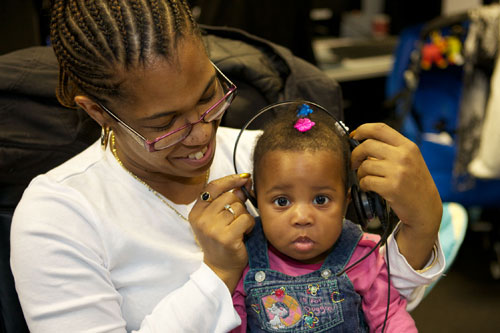How to Use Telepractice for Speech Therapy
I have the dubious pleasure of living directly across from the major shopping center of my town. With the holidays right around the bend, I find myself thinking of excuses to avoid driving anywhere as much as possible. The traffic and hassle is simply not worth it. If you’re like me, the last thing you need is another soccer practice, piano lesson, or speech therapy session to drive your child to. Enter telepractice! Telepractice is a method of delivering services, like speech therapy, to a client via Web cam or similar device. (Speech Buddies also offers an online component via the Speech Buddies University.) For more on speech therapy telepractice, check out our previous posts or head over to the website of the American Speech-Language-Hearing Association (ASHA) for their articles on telepractice. And then kick off your painful shoes, put your feet on the Ottoman, and enjoy taking a break from the commute.
Best Practices in Telepractice
When you’re hunting for a speech-language pathologist (SLP) who delivers services via telepractice, the same basic principles as finding a local SLP apply. Ask about her qualifications, credentials, experience, etc. Ask if she specializes in your child’s particular speech and language issues. And then ask exactly how telepractice is to be put in effect. What equipment does she use? Is the Internet connection secure to ensure your child’s privacy? Is she licensed to practice speech therapy in your state, not just her own? Does she accept your health insurance?
Is Your Child a Good Candidate for Telepractice?
You should also ask if your child is a good candidate for telepractice. Telepractice is not a “one size fits all” solution, and some children may not thrive without face-to-face instruction with the SLP in the same room. Some factors to consider include:
- Your child’s hearing ability, and whether the equipment to be used is sufficient to serve his hearing needs
- Your child’s visual ability (if your child has impaired vision, he may be unable to effectively interact via a computer monitor)
- Your child’s ability to use the computer
- Your child’s manual dexterity (for using the computer as needed)
- Your child’s ability to tolerate sitting in the same place for the entire session
- Your child’s ability to maintain his attention on speech therapy activities during the entire session
As well, your child will need a quiet environment within the home for his speech therapy activities. If the child and the SLP speak different languages, the availability of an interpreter is also a consideration.
Working with Your Child
Unless your child is around high school age and has a high level of maturity, you should expect that the speech therapist may request that you remain with your child during the session. (And if she doesn’t, you should introduce the idea to her.) This helps ensure that your child remains actively engaged in the lesson and doesn’t try to sneak off for a game of soccer outdoors with his siblings.
Before beginning speech therapy via telepractice, you should also ask the SLP what tools you’ll need to have on hand. SLPs use a variety of tools and props in their practices, such as worksheets with target sounds and words. You may need to print out “homework” material. If your child is working on his articulation, you may need Speech Buddies tools. These are easy-to-use, simple devices that allow the child to position his tongue properly for various target sounds.
Monitoring Your Child’s Progress
Check in regularly with the SLP via phone or email to monitor your child’s progress. As your child meets his goals, ask the SLP about new goals. And always ask about additional at-home speech therapy techniques to work on with your child. Although he’ll be having his speech therapy sessions at home with telepractice, speech therapy should extend beyond those sessions to accelerate your child’s progress.



